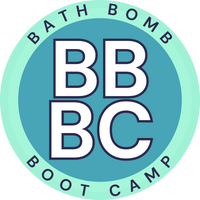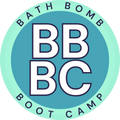What Are The Properties Of Soap Making Oils?
Handmade soap recipes make use of many different oils and butters, each of which produces different effects and lathers. To further clarify what different oils will do to your homemade soap’s final form, we’ve compiled a list of the most popular oils and butters used in soap and what they will do.
Coconut oil: coconut oil will produce a hard soap bar with an abundant, fluffy lather that will be exceptionally cleansing. Keep in mind that high amounts of coconut oil in soap can be drying, but you can counteract this by using a higher superfat.
Olive oil: olive oil will produce a low lather that will feel slippery, there will be little bubbles and it won’t cleanse as well. On the plus side, the low lather of olive oil soap means that it will be mild and nourishing for sensitive skin. Soap used on sensitive skin or for babies should contain a high percentage of olive oil, though they will need longer to cure. Soap made with olive oil will be soft initially on release from the mold but cure very hard.
Palm oil: palm oil will produce a hard, long-lasting bar of soap with a mild, stable lather. While palm oil can be great for those who do not want to use any animal derived products in their soapmaking, it should be noted that there is controversy over palm oil’s negative environmental effects.
Cocoa butter: cocoa butter will produce a gorgeous, long-lasting lather as well as a hard, long lasting soap bar. Some people like to mix high amounts of butters and oils in soaps up to 80% in their soap recipes to produce a luxurious, moisturizing soap bar.
Shea Butter: very similar to cocoa butter, Shea butter will produce a lotion-like lather that is stable and nourishing with a medium hard, long lasting bar.
Castor oil: castor oil is great for boosting the lather in soap recipes and making a soap bar that dissolves more easily in water. Many people like to use it in recipes that use high amounts of nourishing, but lather-killing ingredients like olive oil.
5 Ingredients To Avoid In Soap Making
Triclosan
Triclosan is a pesticide with antibacterial properties that is added to soap as a general antibacterial. Using antibacterial products on a daily basis has been shown to contribute to the spread of antibiotic resistance. It is rare that we have been doing anything so filthy that we require antibacterial products to wash it away.
Triclosan is also an endocrine disruptor that can cause dangerous fluctuations in hormonal balances. Women are especially susceptible to triclosan since it has a strong effect on estrogen and can increase rates of breast cancer.
Dioxane
Dioxane is a synthetic derivative of coconut that tricks many people into thinking it has its basis in nature. Unfortunately, dioxane is a carcinogenic chemical that is especially harmful to the liver, brain and kidneys and should be avoided.
Diethanolamine (or DEA)
DEA is easily absorbed by the skin and can combine with a common nitrate preservative often added to soap to make nitrosodiethanolamine (or NDEA). NDEA is a possible carcinogen and has been linked to the development of kidney and liver cancers. Pregnant women should be especially cautious about DEAs as they can interrupt the absorption of choline, something that growing fetuses require for proper brain development.
Parabens
Parabens are preservatives that are often added to many cosmetic products, including soap. Parabens have been shown to increase the risk of breast cancer in women since they can mimic the estrogen hormone. Parabens have also been linked to neurological issues by way of nervous system toxicity.
PEG-6
Exposure to PEG-6 in large quantities has been shown to elevate the chances of developing breast cancer. It also contains many toxic impurities that can cause a wide range of dangerous conditions to develop.
If you want to avoid these chemicals, consider investing in or making your own handmade soap. It’s easy, affordable and safe and will protect you and your family from exposure to harmful chemicals.

